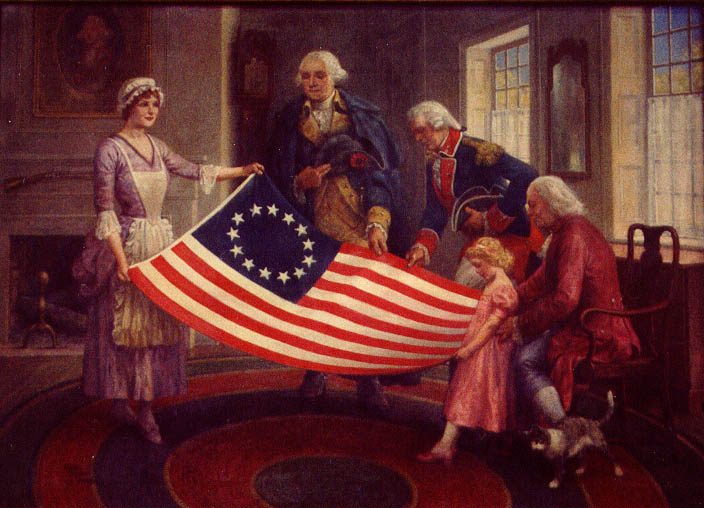
Fourth of July
Fourth of July
1800
The Fourth of July celebration in Washington DC in the year 1800 would have been markedly different from modern-day celebrations. The day began with cannon and musket salutes at dawn in every town and city, then citizens would gather to read the Declaration of Independence and discuss the founding principles ending the British monarch’s iron grip, the rest of the day was spent on military parades, demonstrations, and picnics. Homes and community buildings were decorated in red, white, and blue. Gatherings were festive with great optimism for the future of this new nation. The day ended with fireworks.
The President of the United States in the year 1800 was John Adams. He was the second President of the United States, serving from March 4, 1797, to March 4, 1801. Adams was a Founding Father and played a crucial role in the early years of American independence. His presidency was marked by challenges such as the Quasi-War with France, tensions with Britain, and the passage of the Alien and Sedition Acts.
In the year 1800, the average life expectancy in the United States was around 35 to 40 years. This figure was influenced by high infant mortality rates, the prevalence of infectious diseases, limited medical knowledge, and the lack of modern healthcare and sanitation practices. Life expectancy varied widely based on factors such as geography, socioeconomic status, and living conditions.
The United States faced different health challenges compared to later periods, primarily due to the prevailing conditions and medical knowledge of the time. The top three causes of death in the USA around 1800 were: infectious diseases, childbirth-related complications, and accidents and workplace hazards. These causes underscored the harsh living conditions, limited medical resources, and vulnerability to infectious diseases that characterized the early 19th century in the United States.

1850
Fourth of July celebration in Washington DC would have been a mix of tradition, patriotism, and growing tensions over issues such as slavery and states’ rights. Overall, the Fourth of July celebration in Washington DC in 1850 would have been a spirited commemoration of American independence, tempered by the challenges and divisions of the time, foreshadowing the tumultuous events that would soon unfold in the nation’s history.
The President of the United States in the year 1850 was Zachary Taylor. He assumed office on March 4, 1849, after winning the 1848 presidential election. Zachary Taylor was a career military officer and a national hero from the Mexican American War. However, his presidency was short-lived; he served only until his death on July 9, 1850. After his death, Millard Fillmore, who was the Vice President, succeeded him and served as the 13th President of the United States from 1850 to 1853.
By 1850, while some medical advancements had been made, the top three causes of death were still largely dominated by infectious diseases and issues related to public health. The main causes were infectious diseases such as cholera, smallpox, typhoid fever and dysentery, respiratory diseases, and childbirth and infant mortality due to infections and complications of childbirth. These causes reflect the ongoing challenges in public health, limited medical knowledge, and the impact of industrialization and urbanization on living conditions.
The average life expectancy in the United States was approximately 38 to 40 years. This slight increase from earlier in the century was due to gradual improvements in living conditions, nutrition, and some public health measures. However, high infant mortality rates, infectious diseases, and limited medical knowledge continued to significantly impact overall life expectancy.
1900
In the year 1900, the Fourth of July celebration in Washington DC would have been quite different from what we see today. Overall, the Fourth of July celebrations in Washington DC in 1900 would have been marked by a mix of solemnity, patriotism, community spirit, and festive activities, reflecting the values and aspirations of turn-of-the-century America.
William McKinley was president in 1900. He served as the 25th President from March 4, 1897, until his assassination on September 14, 1901. McKinley was known for his policies that promoted American industry and trade, and he led the country through the Spanish-American War in 1898, which resulted in the acquisition of territories such as Puerto Rico, Guam, and the Philippines. His presidency also oversaw a period of economic prosperity and industrial growth in the United States.
Life expectancy continues to increase to approximately 47 to 50 years. This improvement from the mid-19th century was due to better public health systems, better nutrition, advances in medical science, and efforts to control infectious diseases through sanitation and vaccination programs. However, infant mortality rates were still relatively high, and infectious diseases remained a significant health concern.
The top three causes of death in the United States reflected a combination of infectious diseases and chronic conditions, as well as conditions related to industrialization and urbanization. The leading causes of death were pneumonia and influenza, tuberculosis, and heart disease. These causes highlight the ongoing impact of infectious diseases alongside the emergence of chronic diseases as significant health challenges in the early 20th century United States.
1950
1950 would have been a blend of tradition, patriotism, and a sense of optimism for the future, embodying the American spirit in the midst of a changing world. Overall, the celebration would have emphasized patriotism, American values, and unity, reflecting the spirit of independence and freedom as the economy soared in the post-world war era.
The President of the United States in the year 1950 was Harry S. Truman. He assumed office on April 12, 1945, following the death of President Franklin D. Roosevelt, and was elected to a full term in 1948. Truman’s presidency during the early 1950s was marked by significant events such as the beginning of the Korean War in 1950, the establishment of NATO (North Atlantic Treaty Organization), and the early stages of the Cold War with the Soviet Union. He served as President until January 20, 1953, when Dwight D. Eisenhower was inaugurated as the 34th President of the United States.
In the year 1950, the average life expectancy in the United States was about 68 years. This significant increase from earlier in the century was due to major advancements in medical technology, widespread use of antibiotics, improved public health measures, better nutrition, and increased access to healthcare. The reduction in infant mortality rates and the control of many infectious diseases also contributed to this rise in life expectancy.
The top three causes of death in 1950 were heart disease, cancer, and stroke. What do these diseases have in common? Lifestyle changes, diet, tobacco use, and increased prevalence of hypertension. These causes reflect the shift from infectious diseases to chronic non-communicable diseases as the primary health concerns in mid-20th century United States.
2000
The Fourth of July celebration in Washington DC in the year 2000 was a significant event, marking the nation’s bicentennial celebration since the founding of the United States. With the “Dot Com” crash just months before the holiday, the nation was on the cusp of the fastest period of change from an industrial to technologic based economy. Fourth of July celebrations were televised from all major cities featuring celebrities, music, fireworks, and larger well-choreographed celebrations honoring the nation’s 224th anniversary with spectacular events that united people in patriotic spirit and celebration.. The Fourth of July in 2000 was a time of national pride and unity, with Americans from all walks of life coming together to celebrate the ideals of liberty and independence. The celebrations in Washington DC reflected a blend of tradition, modern entertainment, and a reaffirmation of American values.
Bill Clinton was president. He served as the 42nd President from January 20, 1993, to January 20, 2001. In the year 2000, Clinton was in his second term in office. His presidency was characterized by economic prosperity, advancements in technology, and significant international events such as NATO’s intervention in Kosovo and the peace process in Northern Ireland. The year 2000 was also notable for the presidential election, which saw George W. Bush elected as Clinton’s successor.
The life expectancy rate in the United States was approximately 76 to 77 years. This increase reflects continued advancements in medical science, healthcare delivery, disease prevention, and public health initiatives over the 20th century. Improved treatments for chronic diseases, better nutrition, safer living and working conditions, and advancements in medical technology all contributed to the rise in life expectancy by the turn of the millennium.
In the year 2000, the top three causes of death in the United States were heart disease, cancer and stroke just as it was fifty years before. These causes reflect the ongoing dominance of chronic diseases as leading causes of mortality in the United States by the turn of the millennium, highlighting the impact of lifestyle factors and aging population trends.
2024
I chose these fifty-year increments as evidence that, regardless of what world or national issues of their time, unity and optimism of a working democracy was celebrated on the Fourth of July.
Our President is Joe Biden.
Our nation suffers from social isolation, loneliness, despair, and inequality.
Our past is our identity. Our future is our fantasy. The only reality we have is now, today.
























